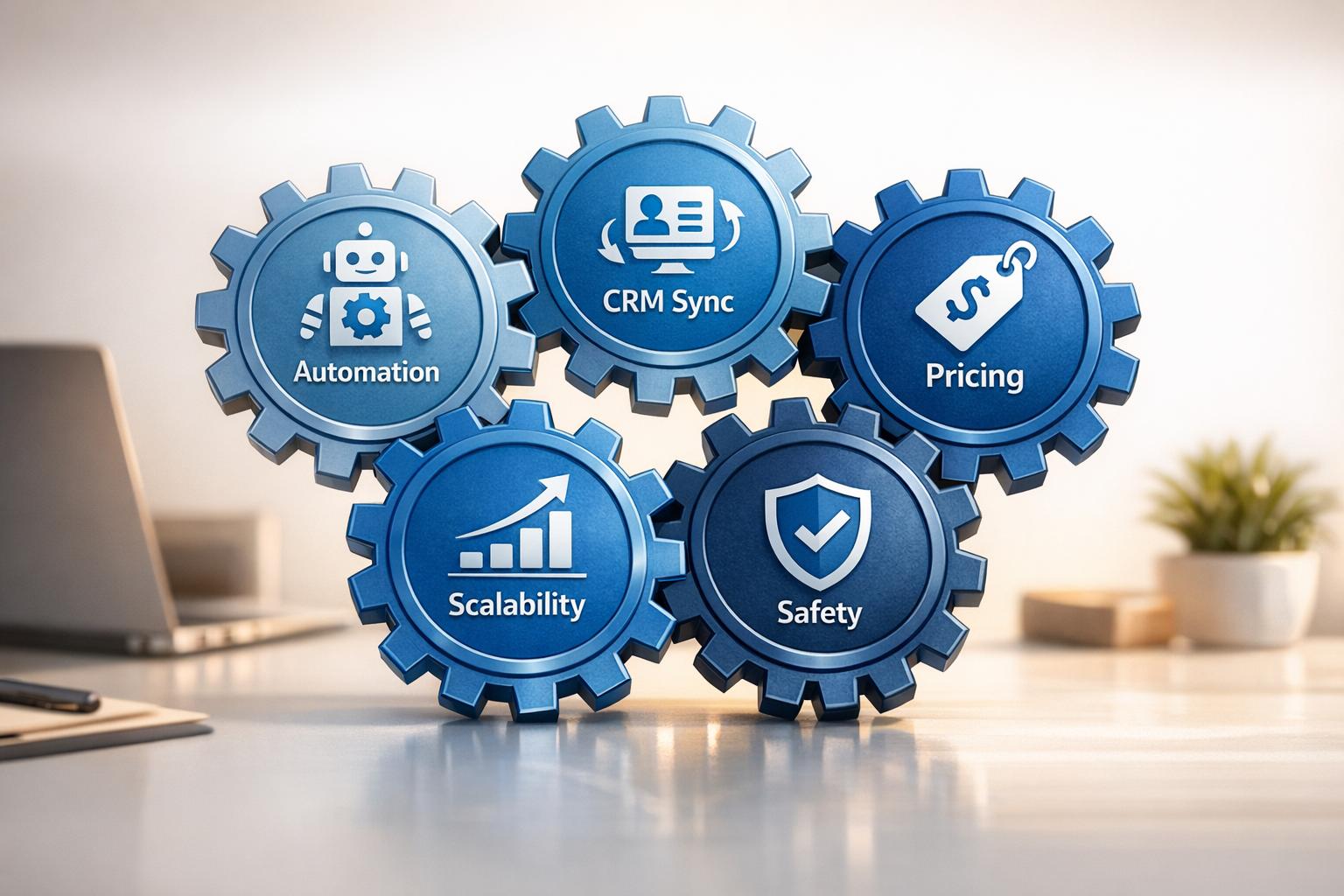
If you're looking to improve your sales forecasting accuracy and achieve better results, you may want to consider using machine learning techniques. Accurate sales prediction is complex. Traditional methods often fall short. But, machine learning (ML) algorithms help. They analyze large sets of historical data, spotting patterns and trends for smarter decisions.
Here, we introduce the concept of sales prediction using machine learning. We'll highlight its role in accurate forecasting. Discover how machine learning techniques transform business sales forecasts. They guide towards smarter decisions and boost efficiency.
Essential Points
- Machine learning enhances sales forecasting accuracy by analyzing historical data to identify patterns and trends.
- It surpasses traditional methods by adapting to changing sales variables.
- Various machine learning techniques contribute to forecasting improvements, like Linear Regression, Decision Trees, Neural Networks, Time Series Forecasting, and Moving Averages.
- Applying machine learning in sales leads to strategic advantages like efficient inventory management.
- Building a model involves steps like data preprocessing and feature engineering, using tools like Python.
Understanding Sales Forecasting and Its Challenges
Forecasting sales is vital for any business strategy. It helps companies make informed choices about inventory management, revenue projections, and resources. Yet, predicting sales accurately can be tough. Many factors add to this challenge.
One of the biggest challenges in sales forecasting is the reliability of sales data. Without accurate sales data, it is challenging to build forecasting models that produce dependable results. Additionally, traditional forecasting methods, such as time-series analysis, can be limiting. These methods assume that all variables influencing sales remain constant over time. However, this is seldom true in real-world scenarios.
To overcome these challenges, many businesses are now using machine learning techniques. These techniques enable the creation of more precise sales prediction models. Machine learning models can consider a vast dataset of variables. They uncover patterns and relationships that traditional methods typically miss.
5 Machine Learning Techniques for Sales Forecasting
Some machine learning techniques are effective in creating accurate sales forecasts. Yet, there are more advanced methods that can further enhance your business's predictions.
Below is a table that offers a quick overview. It details various machine-learning techniques used in sales prediction.
Now, we will explore each technique. Each method has its unique contribution to improving the accuracy of forecasting sales. Let's examine them one by one for a clearer understanding.
Linear Regression
Linear Regression is a foundational technique in machine learning technique. It's essential in uncovering relationships between variables. This method is most effective when sales figures are influenced by one or more specific, independent variables.
Decision Trees
Decision Trees are versatile and intuitive. They effectively handle both numerical and categorical data. They are ideal for sales predictions that involve a range of different factors.
In sales prediction, Decision Trees can examine many dimensions simultaneously. For instance customer demographics, past purchasing behavior, market trends, and seasonal influences. This diverse approach allows for a comprehensive analysis. As a result, it yields more precise and practical forecasts.
Another advantage of Decision Trees is their transparency and ease of interpretation. The logic of a Decision Tree is easy to understand, unlike some complex machine learning models. Each branch represents a decision made from a specific data feature. This leads to a definite conclusion or prediction. Such clarity is crucial for businesses. It offers insights and helps explain prediction bases to stakeholders who might not have a technical background.
Neural Networks
Neural networks, and especially deep learning models, excel in machine learning. They are trained to recognize patterns in data, even complex ones that other methods might miss. These networks are especially effective with non-linear data, like images or time series data.
When using a time series dataset, a neural network is useful for detecting complex patterns and relationships. For instance, a neural network could predict sales by considering factors such as season, day of the week, weather, and social media mentions or relevant news articles.
Time Series Forecasting
Time series forecasting is a powerful technique for making predictions. It uses historical data and trend analysis. By studying data trends over time, you can uncover patterns. This leads to more accurate forecasts of future sales.
Moving Averages
Moving averages are a useful statistical tool. They help identify trends and smooth out data fluctuations. Using a moving average lets you spot underlying trends in sales data. This approach results in predictions that are less sensitive to short-term fluctuations.
Integrating these sophisticated techniques into your sales models improves forecast accuracy. Analyzing historical data with advanced machine learning offers deeper insights. These insights enhance your sales data understanding, leading to impactful business decisions.
Benefits of Sales Prediction Using Machine Learning
Predicting sales using machine learning provides many advantages to your business, including:
- Improved forecasting accuracy: Machine learning models excel in analyzing and interpreting large datasets. This gives them a significant edge in forecasting accuracy over traditional methods.
- Dynamic Adaptation to Market Trends: Machine learning algorithms are good at adapting to new and evolving sales trends. Their quick response to market fluctuations helps businesses stay competitive and meet market demands effectively.
- Advanced Pattern Recognition: One of the strengths of machine learning lies in identifying complex, often non-linear patterns in sales data. This ability is key to understanding customer behavior and predicting future sales. A survey reveals that 73% of sales professionals agree that AI, a cornerstone of modern machine learning, can help them extract insights from data that would otherwise be inaccessible.
- Informed Strategic Decisions: Understanding customer behavior, seasonal trends, and market dynamics is key. Advanced sales forecasting provides this insight. It enables businesses to make data-driven decisions.
- Competitive Advantage: ML tools enable them to anticipate market changes, customer preferences, and potential risks. This approach paves the way for sustainable growth and increased profitability.
- Effective inventory management
- Reduced costs associated with excess stock or stock shortage
- Optimized production schedules
Success Stories Using Machine Learning Models
Optimizing Pharma Sales Using Data Analytics
Problem Encountered: A pharmaceutical company faced challenges in demand prediction. This led to issues in stock management and understanding market needs.
Solution: Machine learning techniques, particularly ARIMA and SARIMA models, were utilized. These models helped in analyzing historical data to predict future sales trends.
Business Impact: The implementation of these techniques resulted in more accurate sales forecasts. It improved decision-making and reduced overstocking. It also increased understanding of market dynamics, leading to cost savings and more efficiency.
AI/ML-Based Network Traffic Prediction Mechanism
Problem Encountered: A company faced challenges with network systems. They experienced unpredictable traffic loads, leading to congestion and inefficiencies. This unpredictability made it difficult to manage network resources effectively.
Solution: AI and ML algorithms were employed to predict network traffic patterns. These algorithms analyzed historical data to forecast future traffic, enabling proactive adjustments to network bandwidth and resources.
Business Impact: The AI/ML-based traffic prediction significantly improved network efficiency and user experience. It effectively reduced congestion and optimized the allocation of resources. Overall, the performance of network systems greatly improved.
Transforming Chemical Manufacturing with Artificial Intelligence
Problem Encountered: Chemical manufacturing companies were grappling with various issues. They faced rising costs and struggled with inaccuracies in inventory tracking. Compliance posed significant difficulties. Additionally, they had issues with inefficient task management and identifying production bottlenecks.
Solution: An AI and ML-integrated enterprise application was developed. This solution aimed to improve inventory management, task management, and overall operational efficiency.
Business Impact: The AI solution significantly improved efficiency, data analysis, and inventory management. It also fostered better collaboration and task management. These improvements resulted in cost savings, a more cohesive workforce, and an improved company bottom line.
Building a Sales Prediction Model Using Machine Learning
Building a reliable sales prediction model using machine learning is a step-by-step process that involves data preprocessing, feature engineering, hyperparameter tuning, and model evaluation. Python is a popular tool for developing machine learning models with libraries like sci-kit-learn. In this section, we provide insights into popular machine-learning techniques and tools that can be leveraged to build a robust sales prediction model.
Data Preprocessing
Data preprocessing is a crucial step in building a machine-learning model. This process focuses on cleaning up your data. It removes inconsistencies and missing values, which can affect model accuracy. Historical sales data is a key input in building a sales prediction model, and a comprehensive dataset can help ensure accuracy.
Feature Engineering
After data preprocessing, the next important phase is feature engineering. Here, you select and transform the most relevant features that can be used in the machine learning model. Feature engineering is about analyzing the relationships among variables in your dataset. You create new features based on this analysis. Machine learning techniques, such as regression analysis and time series forecasting, can help generate accurate features.
Hyperparameter Tuning
Hyperparameter tuning is a vital process for refining the machine learning model. It involves fine-tuning the settings and configurations of the algorithm. This optimization enhances its performance and accuracy. Hyperparameters are crucial parameters set before the learning process starts. They greatly influence the behavior of the trained model.
Model Evaluation
Once you've preprocessed your data and engineered relevant features, the final step is to select an appropriate machine-learning model. Common choices include regression models for sales prediction. You can also use other models like random forest and neural networks to boost accuracy. Testing the model with datasets is crucial to ensure its predictions are accurate.
Improving Sales Performance with ML Insights
Machine learning offers more than just accurate sales forecasting. It helps businesses analyze sales data to uncover patterns and trends. These insights provide a deep understanding of customer behavior.
Machine learning empowers sales teams to make better decisions. These informed choices boost performance and increase revenue. Here's how machine learning insights can be beneficial:
Furthermore, machine learning can also help businesses optimize their sales tactics. Sales teams can analyze sales data to discover which actions are most successful. This analysis enables them to make data-driven decisions to improve their processes.
Final Thoughts
If you're looking to improve your sales performance, accurate sales forecasting is essential. Machine learning techniques lead you to informed decision-making and optimize your sales activities. This can drive revenue growth.
Don't miss out on the potential of sales prediction using machine learning. Invest in accurate forecasting to influence sales and improve your bottom line.
Thank you for reading. We hope you found this article informative and helpful.
And, if you want to further enhance your sales efforts, take a look at SalesMind AI. Our AI sales prospecting and conversational software help you achieve better results.
FAQ
What is sales prediction using machine learning?
Sales prediction using machine learning is the process of using machine learning algorithms and techniques to forecast future sales based on historical sales data. It relies on data science and regression analysis to spot sales patterns and trends. It allows businesses to make informed decisions and improve their sales forecasting accuracy.
What are the challenges of sales forecasting?
Challenges in sales forecasting include the need for accurate, reliable sales data and the limitations of traditional forecasting methods. These methods often fail to capture the complexities and seasonality of sales, leading to inaccurate forecasts. Machine learning addresses these issues with advanced techniques and algorithms.
How do you build a sales prediction model using machine learning?
Building a sales prediction model using machine learning involves several steps. It starts with data preprocessing, where the sales data is cleaned and prepared for analysis. Feature engineering is then performed to extract relevant features from the data. Machine learning techniques, such as regression or time series analysis, can then be applied to build the predictive model. The model is evaluated and refined using appropriate metrics to ensure its accuracy and reliability.
What advanced techniques can enhance sales prediction using machine learning?
Advanced techniques, such as neural networks, time series analysis, and statistical methods like moving averages, can enhance sales prediction using machine learning. Neural networks handle complex data patterns, time series analysis is ideal for forecasting, and moving averages smooth out data for trend identification.
How can machine learning improve sales performance?
Machine learning improves sales performance by identifying sales data patterns and trends. This enables businesses to anticipate customer behavior and make data-driven decisions. Accurate sales forecasting optimizes sales activities, resource allocation, and strategy, providing a competitive advantage and driving revenue growth.


.avif)


